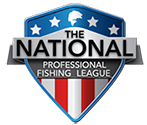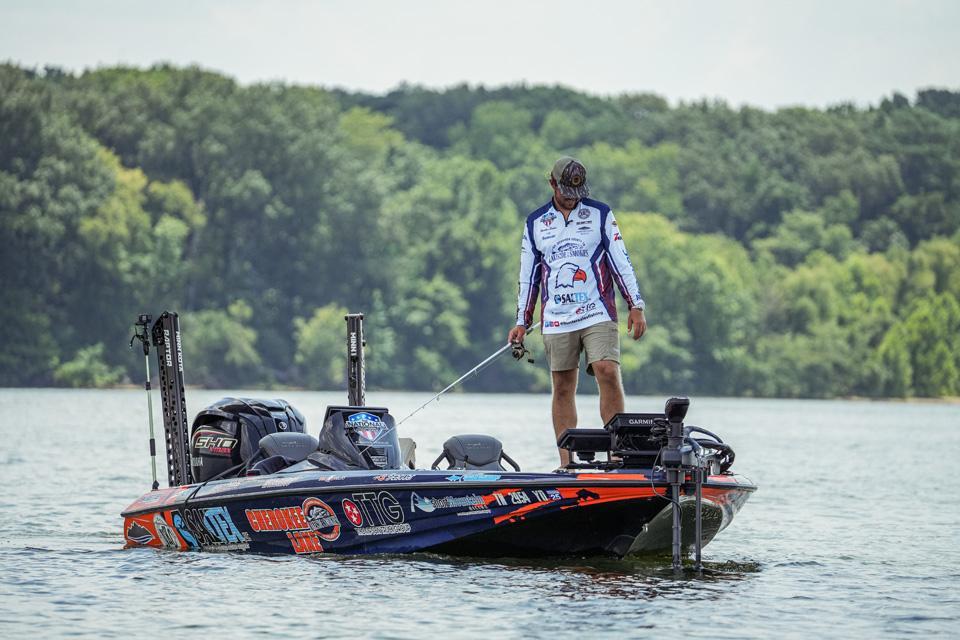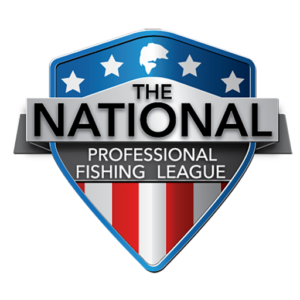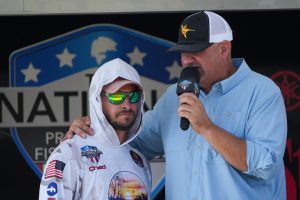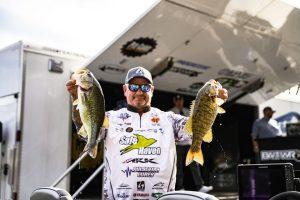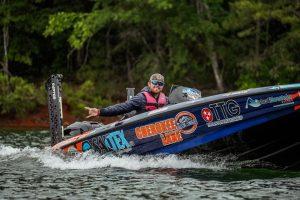Story by Hunter Sales | Photos by Tanner & Travis Lyons
One of the goals I have for this column is to teach the next generation as much as I can about this sport and industry. This passion to teach and inform is why I work every day as a college fishing coach. There are many lessons that I’ve learned since taking a leadership role with the Carson-Newman University Fishing Team and fishing at a high level. Today we are going to dive into the financials of a professional bass angler and what it takes to turn this passion into a career.
Without disclosing the specifics of each league, the average cost of entry fees to fish one of the three professional tournament trails is around $40,000. For sake of this article, let’s assume a seven-tournament season. Those seven events will cost an angler an average of $1,750 per tournament in travel costs (fuel, lodging, meals). This brings the direct costs of getting through the season to a total of $52,250. It’s very difficult to put an average cost of indirect expenditures such as boat wrap, insurance, electronics, maintenance, tackle, vehicle payments, etc., as these vary greatly with each angler. In my specific situation, this will constitute a yearly expense of approximately $20,000 on top of the $52,250. For the sake of easy math, let’s assume that the total cost of doing business for an average professional angler is $70,000 a year.
The 40th place angler in the Bassmaster Elite Series (103 total anglers) this year, Alex Redwine, made almost exactly $70,000 in tournament earnings according to their angler database. The 40th place angler in Major League Fishing’s Bass Pro Tour (80 anglers) made $46,000. With the NPFL season still underway, it is difficult to project the earnings of each angler, but the point is that few anglers can break even on tournament winnings alone. The top anglers in the rankings often enjoy sizeable winnings in any given year, but it’s unpredictable. Anglers must generally rely on other sources of revenue to pay their bills, such as sponsorships and/or a day job.
While there are certainly lucrative sponsorship deals that exist in the industry, these high-dollar deals are often received by seasoned veterans who have been building their brands and audiences through lengthy careers. Based upon my network of friends who fish professionally, I would estimate that the average angler between these professional leagues receives 65-70% of their cash sponsorships from non-endemic (outside the fishing industry) deals. There is a huge variance in average sponsorship revenue between anglers, but I would estimate the median to be somewhere around $50,000 per angler with some being much, much higher and most being lower. Assuming you were in the 50th percentile of both tournament winnings and sponsorship revenue, the average top-tier professional fisherman would net a profit of $40,000 each year.
That’s not a strong return for the financial risk and gypsy lifestyle that the career requires.
On the bright side, there are a lot of opportunities for anglers to work between tournaments. Some anglers mow grass, some work construction, some work as pro staff managers, plenty own their own businesses, and some coach fishing teams! The remarkable thing about professional fishing is that despite the difficulties of making it a bona fide career, the love of the sport runs so deep for so many anglers that there are still droves of up-and-comers who are eager to get a shot to pay the bills with bass.
The industry has grown immensely over the years, and I believe we are still trying to figure out the best way to structure the sport. I have hope that the next generation of anglers will embrace the digital age, have larger audiences than ever, and be able to truly make a living chasing bass!
Hunter Sales – Angler Profile
Like, Follow & Subscibe: Instagram – Facebook – YouTube
